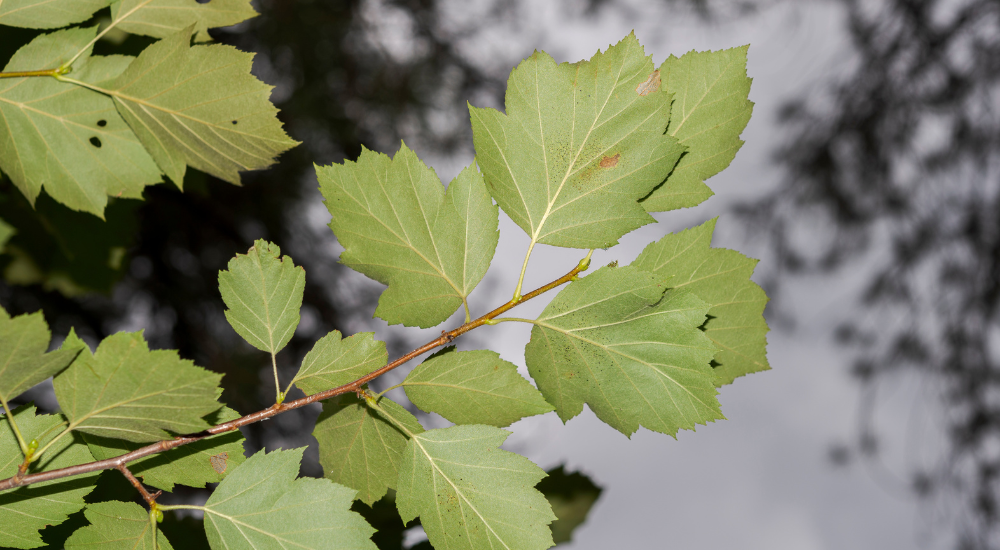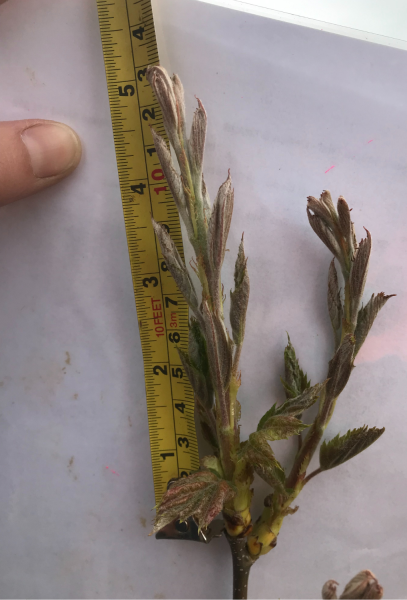
Monitoring wild service trees nationwide for the next 150 years
Once widespread, the wild service tree is now rarely found outside of ancient woodlands. Happily, this beautiful tree is one of the native species that we plant and protect in the Heart of England Forest.
Due to its scarcity, there is limited knowledge around the experience of growing wild service trees (Sorbus torminalis), as well as no seed source trials or tree breeding carried out in the UK. Due to this, little is known regarding the location of the best quality trees in Great Britain from which seed can be collected.
In contrast, there is significant silvicultural (the growing and cultivation of trees) knowledge that exists in France and Germany where the wild service tree is grown to produce high quality timber, where markets can be very strong, and where seed source trials and tree breeding have been carried out since the late 1970s.
The wild service tree and its importance
The wild service tree is an intriguing species.
A deciduous broadleaf tree native to the UK and parts of Europe, Africa and Asia, the leaf buds of the wild service tree are rounded and green, like little peas, and form on short leaf stalks. The lobed leaves are similar to maple with three or four unequal lobes and a sharply toothed margin. They turn a rich, coppery red or russet colour before falling, so autumn is a great time to see the foliage at its colourful best.
A mature wild service tree grows up to 25 metres in height, and its bark is brown and patterned with cracked square plates. The twigs are slender, straight, and shiny grey brown in colour, terminating in rounded green buds of up to 5mm long.
Once widespread, it became a victim of forest clearance over the centuries and was confined mostly to ancient woodland. Now it is experiencing a renaissance locally thanks to our Heart of England Forest planting policy. In 2019, 0.5% of our newly planted trees were wild service. 325 were added to the Forest during that planting season, and we continue to include them as an imperative part of our forestry planting mix year on year, with 2% of the trees planted in the 2022/23 winter season being wild service.

The purpose of the seed source trial
A seed source trial was established in England in 2019 with the aim to test some possible seed sources for tree breeding for the growing of this intriguing species. One of the trial sites is the Heart of England Forest. The trial is to test different seed sources of the wild service tree for survival, growth, health and stem quality, to provide recommendations for sustainable silviculture in the UK for the future.
Where were the wild service tree seeds sourced?
The seeds were sourced from the best available wild service trees in woods, forests, and seed orchards in England, France, and Germany, and were collected in the autumn of 2018.
A total of nine seed sources were included in the trial, including Stoopers Wood in the Heart of England Forest. Due to the risk of transporting pests and diseases, all English berries were cleaned and stratified by a professional forest seed merchant, while all French, German and Italian berries were cleaned by professional seed merchants in each respective country and sent for any further cleaning and stratification if required.

How long is the trial?
The trial is due to run for up to 150 years. The Heart of England Forest will maintain the experiment for this period, which includes maintenance and measurements that will be carried out at regular intervals.
Phase one of the experiment is to monitor the survival and early growth. This has now been completed and analysed. Data will then be gathered again after 15-20 years during the trees canopy closure phase. Then again at 20–30-year intervals.
How are the wild service trees faring in the Forest in their fifth year?
Despite a very hot and dry growing season in 2022, no mortality of wild service trees has been recorded. Although some of the trees had less vitality, most of the wild service appear to have established well.
The challenges in the trial so far have been the unpredictable weather, therefore watering of the trees was imperative and much needed in August 2022. The Forest also has thriving vegetation surrounding where the trees are located. Due to the quantity of heavy grass around each individual sapling, following mowing, saplings were released, and weeds trampled. From monitoring the site, our forestry team will use mechanical weeding methods at the start of summer each year to keep the trial consistent.
Only five years into the trial and with 145 years more to go we can already see that last year’s trend in height increment across all nine sites came from the Germanic seeds, whereas the English seed sources fell behind across all nine sites that are participating in the trial across Europe.

Support our work
Although you are not able to sponsor one of our wild service trees during the trial, you can dedicate a tree in the Forest. Tree dedications support our work growing the Forest and helping to safeguard the future of trees and seed provenance.
Whether you are marking a donation with a dedication certificate, adding a personalised tag to the branches of an established broadleaf tree, or booking your unique planting experience, you will become a lasting part of the Forest which will benefit the environment, wildlife, and people for generations to come. Dedicate a tree | Heart of England Forest



